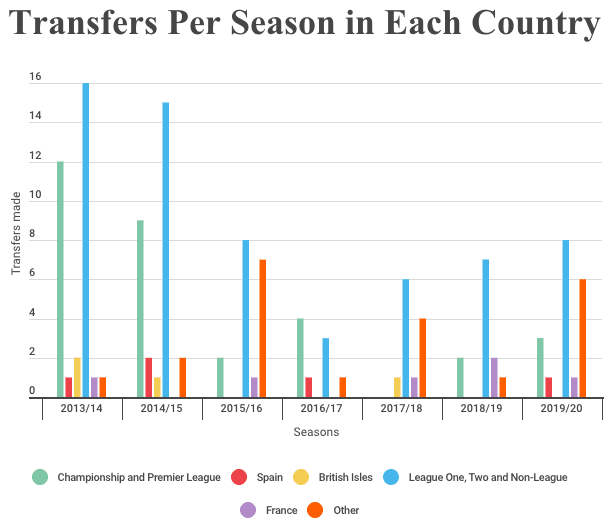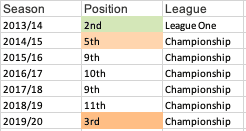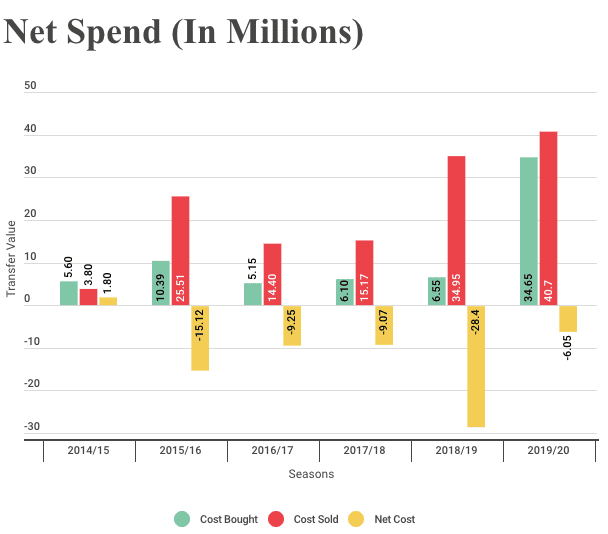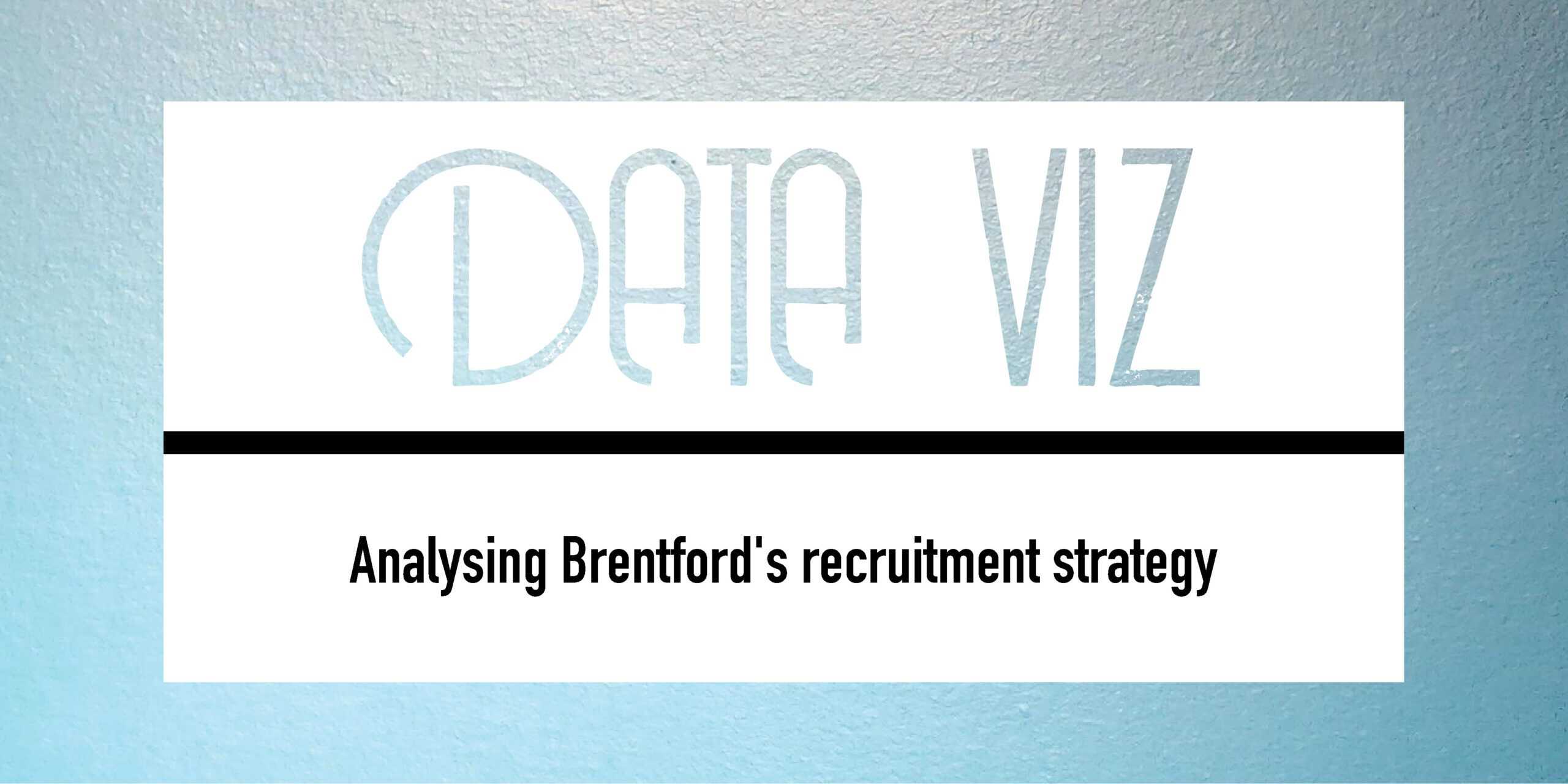The story of Brentford has been a fairytale story, and an essential part of it is their recruitment model that Rasmus Ankersen built alongside Matthew Benham in 2014 onwards.
They were promoted to the Championship in 2013/14 and have stayed up in the division until now. The secret to this is their coach, Thomas Frank’s innovative tactics and Brentford’s recruitment model. So, in this data analysis we will be looking at Brentford’s transfer strategy using data and statistics, with a “Moneyball” approach to making these transfers.
Brentford looks in places most clubs on their level don’t look, like the second division in France or lower divisions in Denmark. They use the underlying data like Expected Goals, Expected Assists and Smart Passes. Using these aggregated statistics, they buy players that fit their style at relatively lower prices. They used this method with players like Pontus Jansson from Leeds as well as players like Bryan Mbuemo from Troyes.

The graph above shows the countries from which Brentford generally purchase from in the transfer market. In their first season under Benham, where they did not have their model, Brentford signed players majorly from England, with only five signings from outside the country. What is essential to notice is after the entrance of Rasmus Ankersen and Phil Giles, the number of signings shot down to lower than five, and the number of signings from countries like Germany and Denmark increased from one to six. This is a bold recruitment strategy as most teams in the Championship tend to purchase from lower leagues like League One and Two or loan players from the Premier League in search of experience and get more game time.
The table below indicates Brentford’s position in the Championship since being purchased by Benham in the 2013/14 season:

The green cell indicates direct promotion from League One to the Championship. The orange cells indicate the positions that took Brentford to the playoffs. The first season was due to investment from Benham into the club and changing the system of playing and recruitments which motivated the players to charge on to the Championship. The next few seasons in the Championship show the total spending on players increased, as we can see below:

The expenditure indicated above shows the total investment of the club since promotion to the Championship. Although Brentford’s owners are wealthy, they spend limitedly and only spend when required. This included signing Watkins, Maupay, Canos and Henry, who have provided well for the team after being bought for a lower value. The net cost (in yellow) was positive in Benham’s first season as owner of the club but became negative since Ankersen started off at the club. This is the second facet of the Moneyball strategy we saw: Buy low, sell high.
Conclusion
When looking at recruitment models, Brentford has a very interesting one as they have consistently used their “Moneyball” model to buy and sell players.
The key is being able to identify undervalued talent in the market, develop them, and then sell them on for profit, gradually building more value into the squad and gradually increasing the level of the squad.
Brentford seems to be punching above their weight this season, considering they have a lower ticket sales revenue than most teams and are competing for visitors with London heavyweights Chelsea, Arsenal, and Tottenham Hotspur. With the COVID-19 situation putting them in even more trouble, their recruitment model has been the main factor this season that has put them in the driving seat for promotion.






Comments